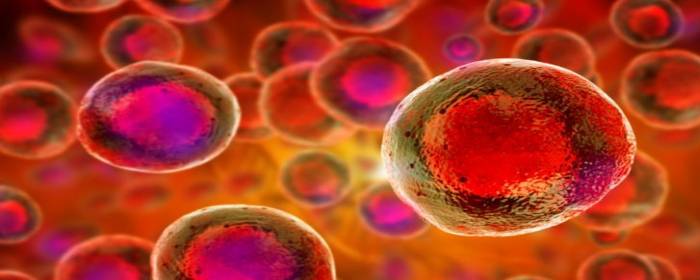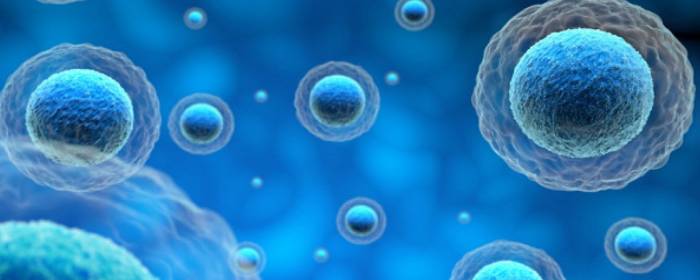
by admin | Dec 12, 2018 | Stem Cell Therapy
Stem cell therapy is used for a broad range of applications, including the treatment of injuries and chronic conditions. Before undergoing this form of therapy, many patients are naturally inclined to explore any possibilities which could enhance the effectiveness of treatment. One option which is sometimes posed to patients is voluntary fasting – but is there really any benefit to fasting prior to stem cell treatment?
What the Research Says
In May of 2018, MIT biologists announced that they’d made a groundbreaking discovery: according to their research, it appeared that fasting could boost stem cells’ regenerative capacity. In an animal study, fasting spurred cells to break down fatty acids instead of glucose, which stimulates stem cells to become more regenerative.
Yet, the evidence only showed the metabolic switch taking place in the intestinal stem cells. After mice fasted for 24 hours, the researchers removed intestinal stem cells and grew them, finding that the fasting doubled the cells’ regenerative capacity.
Unfortunately, while this finding could hold value for patients recovering from gastrointestinal infections or other conditions affecting the intestine, as of yet, there is no concrete evidence which suggests it could benefit patients receiving stem cell therapy for other conditions. For instance, someone who is undergoing stem cell therapy to treat a musculoskeletal injury may likely yield no benefit from fasting, as the enhanced regenerative effects have only been observed in intestinal cells.
Further Studies Are Needed
Aside from the study’s limited scope, the research leader himself also indicated that the findings are still too narrow for drawing concrete conclusions. When interviewed for a publication in Medium, senior author of the study and assistant professor of biology, Omer Yilmaz, said that while stem cells do indeed use fat for energy to improve function, “the next step is to work to understand why that is.” He also added that “with these types of interventions, there’s never one simple answer.”
For now, there appears to be too much uncertainty to recommend fasting prior to stem cell therapy. Because these findings have not been observed in any humans, and those that have been observed were concentrated to intestinal cells, anyone who is receiving stem cell therapy can consider that eating beforehand is possibly unlikely to play any role in altering the results of their treatment.

by admin | Dec 10, 2018 | Stem Cell Therapy
The effects of aging can present themselves in various ways. Sagging, discolored skin, wrinkles, and a loss of fullness and vibrancy around the face and neck are all signs of aging. These obvious signs of aging are partially caused by aging stem cells in the skin. When we are young, the stem cells in our skin are highly active and contribute to healthy, radiant skin. As stem cells age, however, they produce less and less of the substances that help keep the cells around them plump and healthy. Likewise, old stem cells only have a limited ability to become fully functioning adult cells. For these reasons, dermatologists, plastic surgeons, and other professionals in the aesthetics industry look to stem cell therapy as a way to combat the effects of aging on the skin and its appearance.
Many will claim that stem cells do have the potential to rejuvenate skin and slow or even reverse the signs of aging, but sadly, it is difficult for most consumers to tell the difference between the products that just claim to provide stem cell therapy and those that actually deliver it. Some advertisements seem very medically sophisticated. Ideally, however, prospective patients and clients should seek treatment from board-certified physicians who provide treatments using one’s own stem cells (adipose) or from umbilical cord-derived tissues that are carefully screened and regulated.
In summary, stem cells could have an enormous benefit for people who want to slow or reverse the signs of aging. However, some, if not most, commercially available anti-aging stem cell therapies are not currently able to deliver the results they claim. It is important for patients to look for reputable, board-certified providers who are using state-of-the-art technologies in clean, regulated facilities.
Reference: https://www.ncbi.nlm.nih.gov/pmc/articles/PMC4447486/

by admin | Nov 28, 2018 | Stem Cell Therapy, Wharton's Jelly
Perinatal stem cells have been attracting attention globally in recent years due to their potential in regenerative medicine. These stem cells come in many forms, due to the wide variety of potential sources for these cells. Perinatal stem cells, for instance, may be umbilical cord-derived hematopoietic stem cells, amniotic epithelial cells, amniotic fluid stem cells, or chorionic mesenchymal stem cells. All sources, nonetheless are considered biological waste and are therefore usually discarded after delivery of babies.
Importantly, perinatal stem cells, despite their origin, tend to share a number of characteristics that make them beneficial in treating conditions. Additionally, unlike other sources of stem cells, retrieval of perinatal stem cells is noninvasive and does not require the ethical considerations that retrieval from other sources may involve. A recent review in Regenerative Medicine has highlighted the potential benefits of perinatal stem cells in therapeutic interventions.
In addition to the relatively easy collection and preparation of perinatal stem cells, these cells tend to be easily harvested and manipulated without harming either the mother or the baby. Upon collection, these stem cells exist in high volume and have greater ability to proliferate than other stem cell types such as bone marrow stem cells. Research has also shown that these cells tend not to lead to adverse immune reactions, though the mechanisms involved in their relationship to the immune system are not well understood.
Given their relative advantages over other stem cell types, perinatal stem cells are well poised to be used in cell-based therapies targeting a wide variety of conditions. Future research will help to define the precise role these cells can play in regenerative medicine and which conditions they may be most useful for.

by admin | Nov 26, 2018 | Adipose, Aesthetics, Stem Cell Therapy
Although all living organisms experience aging, scientists have relatively little understanding of why aging occurs. The leading theories on aging suggest that living creatures sustain damage to their DNA through exposure to ultraviolet light, toxins, or even the day-to-day stresses of using oxygen for our cellular metabolism. Whatever the cause, this DNA damage causes cells to 1) repair themselves, 2) die, or 3) enter a middle state called senescence where they remain alive, but simply stop participating in active living. If cells successfully repair themselves, they don’t perceptibly age. If cells enter senescence or die, the body shows signs of aging.
The bottom line: If we can help cells repair themselves, and replace dying and senescent cells, we can slow or even reverse aging. All of this may be possible through the careful use of stem cells.
As we age, stem cells lose the ability to renew themselves, to become other cells (differentiate) and to replace aged cells. Older stem cells secrete less and less of the substances that help the cells around them stay young and healthy. Not only do our regular cells age, but so do our stem cells. This is perhaps the strongest point for using stem cells to reverse the visible signs of aging.
Adipose-derived stem cells are one of the most promising sources of stem cells for anti-aging and regenerative medicine. They are easy to harvest by liposuction to remove stem cells along with fat cells. In addition, adipose-derived stem cells have the potential to become all cell types in the skin; namely fat cells, skin cells, muscle cells, and fibroblasts, and others. Even if the stem cells do not become other cells, they strongly secrete cytokines and other substances that help renew and replenish the cells around them.
While additional research is required, adipose-derived mesenchymal stem cells are currently being tested in clinical trials to treat a number of age-related conditions. Indeed, clinicians are currently using the stem cells to perform a number of aesthetic procedures such as breast or buttock augmentation, hand rejuvenation, as facial dermal fillers, and to promote and restore hair growth. As we learn more about how to use the power of stem cells in aesthetic procedures, we will be able to better address the visible signs of aging in the face and body.

by admin | Nov 21, 2018 | Stem Cell Therapy
Multiple sclerosis (MS) has widespread effects on the body. The disease is characterized by a breakdown of the protective cover surrounding the nerves, called the myelin sheath. When the myelin sheath is compromised, it makes it more difficult for the brain to communicate critical messages to the rest of the body. Unfortunately, the ways in which MS affects the body are rarely isolated: when nerve cells are damaged as a result of myelin sheath damage, it leads to a disconnection between the brain and the organs, muscles, and tissues.
Muscle Weakness & Pain
Muscle weakness can impede daily life, and for some, it turns even basic tasks into obstacles. Weakness is often reported by MS patients in the limbs, which can make it difficult to walk, shower, and get dressed. It’s also the culprit behind foot drop, in which the front part of the foot cannot be lifted. This causes individuals to adjust their gait, such as swing their leg outward.
Beyond weakness, MS also often produces muscular pain. Many people with MS experience a sensation of “pins and needles,” sharp pain, tingling, or aches. Involuntary muscle spasms are also common and are experienced primarily in the legs.
Treatment Options
While options such as nerve-blocking agents, muscle relaxants, and pain relievers may be prescribed to treat severe muscle spasms or pain, many patients choose to explore non-drug alternatives first. Working with an occupational therapist, for example, can aid people with muscle pain or weakness in developing different approaches for completing daily tasks and conserving energy. Physical therapists, too, can provide targeted exercises to strengthen key muscle groups, which could help to combat muscle weakness or pain. Lastly, lifestyle adjustments such as improved sleep habits, rest breaks, and assistive devices could help you navigate the muscular challenges presented by MS. Stem cell therapy may also be an alternative option those with MS may consider to potentially help in managing some of the symptoms associated with MS.

by admin | Nov 19, 2018 | Adipose, Osteoarthritis, Stem Cell Research, Stem Cell Therapy
Bone generally develops via one of two distinct mechanisms: intramembranous ossification and endochondral ossification. In the former case, mesenchymal progenitor cells directly differentiate into osteoblasts that form bone. In the latter case, the mesenchymal progenitor cells first create a matrix of cartilage that then acts as a template to enable the remodeling or development of bone tissue. This process of endochondral ossification is the predominant way that bone is generating during the healing process after bones are broken and fractures are endured. Using stem cells to facilitate this process can, therefore, be beneficial in non-healing bone fractures.
A new study published in Acta Biomaterialia has proposed that adipose tissue can be used in bone generation as a scaffold on which adipose mesenchymal stem cells can expand and allow for endochondral ossification. The researchers showed how adipose tissue could be used in this way, through what they termed Adiscaf, to successfully generate cartilage tissue and eventually bone tissue formation. The bone tissue that formed through this process contained bone marrow elements, further demonstrating the bone’s integrity and the promise of this procedure.
Compared to other strategies for building scaffolding, this strategy appeared successful because by using adipose tissue, the adipose stem cells were exposed to their native environment and therefore likely maintained functions they otherwise may not have. Not only will these findings help to solidify our understanding of how to nurture stem cells and enable them to differentiate in ways that can be therapeutically applicable, but they also specifically show how adipose tissue may be able to be used to generate a bone organ through endochondral ossification. Future research will likely help to clarify how these findings can be applied to patients to improve bone healing.







 St. Petersburg, Florida
St. Petersburg, Florida
